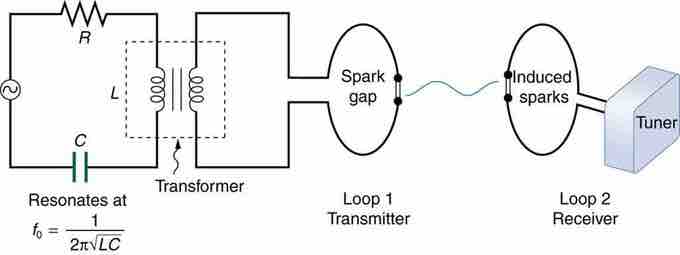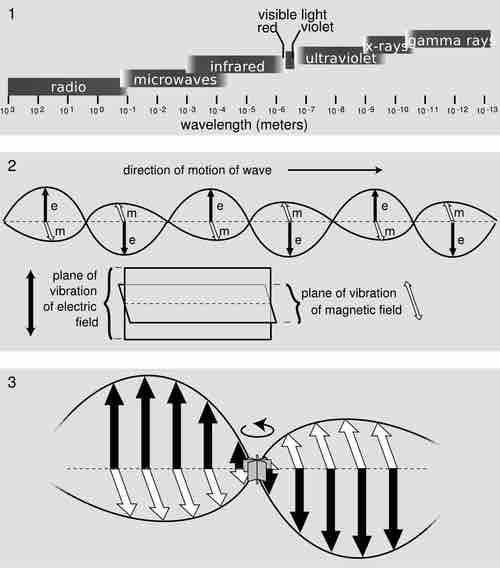Maxwell's Predictions and Hertz' Confirmation
Combining the work of physicists including Oersted, Coulomb, Gauss, and Faraday, and adding his own insights, James Clerk Maxwell developed a complete and overarching theory showing electric and magnetic forces are not separate, but different forms of the same thing: the electromagnetic force. In 1865, he did this in the form of four equations that state the following:
- Electric field lines originate on positive charges and terminate on negative charges, and the electric field is defined as the force per unit charge on a test charge. The strength of the force is related to the electric constant ε0, also known as the permitivity of free space.
- Magnetic field lines are continuous, having no beginning or end. No magnetic monopoles are known to exist.
- A changing magnetic field induces an electromotive force (emf) and, hence, an electric field. The direction of the emf opposes the change.
- Magnetic fields are generated by moving charges or by changing electric fields .
Maxwell's equations predict that regardless of wavelength and frequency, every light wave has the same structure. This means Maxwell's equations predicted that radio and x-ray waves existed, even though they hadn't actually been discovered yet.
Proving Maxwell's Equations
Simple and brilliant in their insight, Maxwell's famous equations would still be hard to prove. Since changing electric fields create relatively weak magnetic fields, they could not be easily detected at the time of Maxwell's hypothesis.
It was not until 1888 that Maxwell's prediction passed an important test when Heinrich Hertz generated and detected certain types of electromagnetic waves in the laboratory. He performed a series of experiments that not only confirmed the existence of electromagnetic waves, but also verified that they travel at the speed of light.
Hertz used an AC RLC (resistor-inductor-capacitor) circuit that resonates at a known frequency and connected it to a loop of wire as shown in . High voltages induced across the gap in the loop produced sparks that were visible evidence of the current in the circuit and that helped generate electromagnetic waves. Across the laboratory, Hertz had another loop attached to another RLC circuit, which could be tuned (as the dial on a radio) to the same resonant frequency as the first and could, thus, be made to receive electromagnetic waves. This loop also had a gap across which sparks were generated, giving solid evidence that electromagnetic waves had been received.

Apparatus Used by Hertz
The apparatus used by Hertz in 1887 to generate and detect electromagnetic waves. An RLC circuit connected to the first loop caused sparks across a gap in the wire loop and generated electromagnetic waves. Sparks across a gap in the second loop located across the laboratory gave evidence that the waves had been received.

EM Wave
The propogation of an electromagnetic wave as predicted by Maxwell and confirmed by Hertz.